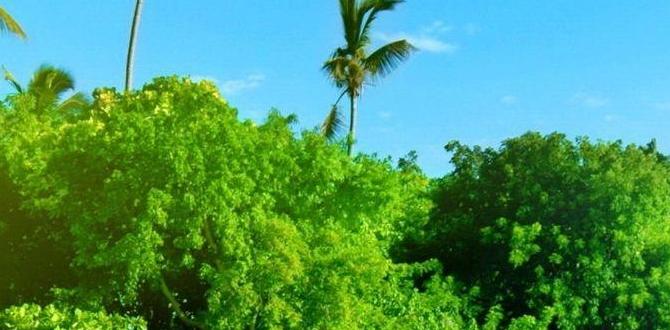Black Forest Accessible Travel Guide: Essential Tips for a Smooth Journey
Exploring the Black Forest doesn’t have to be a challenge. This guide offers essential tips and practical advice for accessible travel, ensuring a comfortable and enjoyable trip for everyone, no matter their mobility needs. Discover how to navigate this stunning region with ease.
The Black Forest, with its fairytale villages and lush landscapes, beckons travelers from around the globe. However, planning an accessible trip can feel overwhelming. Many historical sites and natural trails weren’t initially designed with modern accessibility in mind, which can lead to frustration. But don’t let that deter you! With a little preparation and the right information, you can experience the magic of the Black Forest comfortably and stress-free. This guide will walk you through everything you need to know for an unforgettable, accessible adventure.
Understanding Accessibility in the Black Forest
When we talk about accessible travel in the Black Forest, we mean ensuring that individuals with mobility impairments, sensory differences, or other health needs can enjoy the region’s attractions and amenities. This includes access to transportation, accommodation, dining, and tourist sites. While Germany has made great strides in accessibility across the country, some areas, particularly in older towns and natural parks, present unique challenges.
The Black Forest is characterized by its rolling hills and dense forests, which means that some hiking trails and village centers can be steep or uneven. Many charming old buildings, while beautiful, may have limited accessibility due to their historical nature. However, there are also many modern facilities and designated accessible routes that make exploration perfectly feasible. The key is research and informed planning.
Planning Your Accessible Black Forest Trip
A successful accessible trip begins long before you pack your bags. Thorough research is your most powerful tool.
1. Transportation: Getting There and Getting Around
Air Travel:
The closest major international airports are Stuttgart Airport (STR) and Zurich Airport (ZRH) in Switzerland. Both airports offer comprehensive accessibility services. It’s crucial to contact your airline well in advance to arrange any necessary assistance, such as wheelchair services, pre-boarding, or specific seating. Familiarize yourself with the airport’s accessibility features before your travel date. Most airports have detailed accessibility information on their official websites.
Train Travel:
Germany’s Deutsche Bahn (DB) network is largely accessible. Many stations have lifts and ramps, and specific seating is available for wheelchair users on trains. Booking assistance through DB’s call center or online is highly recommended. They can help arrange staff assistance at stations and ensure accessible seating is reserved. You can find more information on their website regarding barrier-free travel: Deutsche Bahn Accessibility Information.
Car Rental and Driving:
If you plan to rent a car, inquire about accessible vehicles or options for securing your wheelchair. Driving in the Black Forest offers flexibility, but be aware that some roads can be narrow and winding. Parking in smaller towns might be limited, so look for designated accessible parking spots.
Local Public Transport:
Within towns and for longer distances between them, buses and trams are your options. Many newer buses are low-floor and have ramps. However, older tram lines or smaller village buses might not be as accessible. Always check the local transport provider’s website for accessibility details. For instance, in Freiburg, the sustainable urban transport system has many accessible options.
2. Accommodation: Your Accessible Basecamp
When choosing where to stay, accessibility is paramount. Look for hotels or holiday apartments that specifically advertise their accessibility features.
Key Features to Look For:
Step-free access: Entrances, corridors, and room access should be free of steps.
Accessible bathrooms: Roll-in showers, grab bars, and sufficient maneuvering space are essential.
Elevators: If the accommodation has multiple floors, an elevator is a must.
Room size: Ensure enough space for a wheelchair to move around easily.
Lowered light switches and controls: This is a helpful, though less common, feature.
Where to Find Accessible Accommodation:
Hotel Booking Sites: Use filters for “accessible rooms,” “wheelchair accessible,” or “disability-friendly” on sites like Booking.com or Expedia.
Tourist Information Offices: Contact the local tourist information office for recommendations. They often have up-to-date lists of accessible accommodations in their area.
Specialized Accessible Travel Agencies: Some agencies focus solely on accessible travel and can offer expert advice and bookings.
3. Sightseeing and Activities: Making the Most of the Black Forest
The Black Forest offers a wealth of attractions, from scenic viewpoints to historical sites. Here’s how to approach them accessibly:
Towns and Villages:
Charming towns like Freiburg, Triberg, and Gengenbach are popular destinations.
Freiburg: Known for its open-mindedness, Freiburg has a relatively accessible city center with paved streets in the main areas and accessible trams. The Münsterplatz (Cathedral Square) is flat.
Triberg: Famous for its waterfalls and cuckoo clocks. The path to the Triberg Waterfalls from the main entrance has many steps. However, there are viewpoints accessible from the upper entrance, though this requires driving further. Some shops may have their own accessibility challenges.
Gengenbach: This medieval town is picturesque but can be challenging with cobblestone streets. Stick to the main paths.
Nature and Hiking:
The Black Forest is a hiker’s paradise, but many trails are rugged.
Designated Accessible Trails: Look for “barrierefrei” (barrier-free) trails. These are often paved or graveled and have gentler gradients. National park websites often provide maps and details on accessible routes. The https://www.naturpark-schwarzwald.de/ website is a good resource for nature-focused information, though you’ll need to filter for accessibility.
Scenic Drives: Enjoy the Schwarzwald Hochstraße (Black Forest High Road) for breathtaking views without leaving your vehicle. Many viewpoints along this route have accessible parking and viewing platforms.
Lake Titisee: The promenade around the lake is largely flat and paved, offering lovely views and access to boat tours, some of which are accessible.
Museums and Attractions:
Many museums and attractions are adapting.
Cuckoo Clock Museums: Some newer or renovated cuckoo clock manufacturers offer more accessible displays. It’s best to call ahead.
Europa-Park: This major amusement park is one of the most accessible in Germany, with specific guidance for visitors with disabilities.
4. Dining: Enjoying Local Flavors
Finding accessible restaurants is usually straightforward, especially in larger towns. Parks and smaller villages might require more planning.
Tips for Accessible Dining:
Check websites or call ahead: Look for information on accessibility, bathroom facilities, and table heights.
Look for outdoor seating: Terraces can sometimes provide easier access than indoor dining rooms.
Service Station Restaurants: Along major highways, service areas often have modern, accessible facilities and dining options.
Essential Gear and Preparations
Packing smart can significantly enhance your travel comfort, especially when managing specific needs.
1. Mobility Aids and Support
Wheelchairs and Scooters: If you use these, ensure they are in good working order. If renting, arrange this in advance and confirm delivery to your accommodation.
Portable Ramps: For those who don’t have a personal ramp, a lightweight, portable ramp can be a lifesaver for navigating small steps at entrances.
Comfortable Footwear: Even if you’re not doing extensive walking, good, supportive shoes are crucial.
Travel-Friendly Absorbency Products: For longer journeys, excursions, or to ensure peace of mind, consider discreet, comfortable adult or child diapers designed for travel. Brands offering good absorbency and a secure fit can prevent leaks and discomfort, making long bus rides or flights much more manageable. Look for options that are breathable and can be easily changed. Always pack more than you think you’ll need.
2. Documentation and Emergency Preparedness
Medical Information: Carry a card with essential medical information, emergency contacts, and any relevant conditions.
Medications: Keep all necessary medications in their original packaging. Carry prescriptions.
Emergency Contacts: Save emergency numbers for your destination country and your home country.
Travel Insurance: Ensure your insurance covers medical emergencies and any specific needs you have.
Navigating Specific Challenges
1. Cobblestone Streets and Uneven Terrain
Many Black Forest towns feature historic charm, often including cobblestone streets. These can be challenging for wheelchairs, walkers, and even for those with balance issues.
Strategy: Prioritize paved routes. Maps from local tourist offices often highlight accessible pathways. If venturing off the beaten path, consider using a sturdier wheelchair or opting for mobility scooters if available. Take your time and be patient.
2. Steep Gradients and Hills
The very nature of the Black Forest means hills and gradients are common.
Strategy: For hiking, stick to clearly marked accessible trails. For exploring towns, familiarize yourself with street layouts beforehand. Many towns have accessible transport options; identify these before you arrive. For example, in Freiburg, the old town center is relatively flat in parts, but areas leading away from it can be hilly.
3. Language Barriers
While many Germans, especially in tourist areas, speak English, it’s wise to be prepared.
Strategy: Learn a few basic German phrases like “Entschuldigung” (Excuse me), “Sprechen Sie Englisch?” (Do you speak English?), and “Wo ist die Toilette?” (Where is the toilet?). A translation app on your smartphone can also be incredibly useful.
Accessible Travel Tips for Families with Children
Traveling with children, especially those requiring special care like child diapers, adds another layer to trip planning.
Packing Diapers: Pack more than you think you’ll need. If you run out, look for large pharmacies (Apotheken) or supermarkets. Major brands are generally available. Consider travel packs for easier carrying.
Strollers and Carriers: Lightweight, robust strollers are best. For very young children or difficult terrain, a child carrier backpack can be a good alternative, although these require some physical exertion from the carrier.
Pacing: Children need breaks. Plan your days with plenty of downtime, allowing for naps, snacks, and unexpected play opportunities.
Accessible Attractions for Kids: Many attractions have family-friendly features. Europa-Park is particularly well-equipped. Outdoor playgrounds, often found in town parks, are usually accessible.
Resources for Accessible Travel in Germany
Here are some authoritative sources that can help you plan your trip:
Germany Tourism Board (DW Travel): Frequently offers articles and tips on accessible travel in Germany. Look for their “Accessible Germany” sections.
Websites of National Parks: For example, the Black Forest National Park has information on accessibility for its trails and visitor centers.
Black Forest National Park
Local Tourist Information Offices: Every town will have one, and they are excellent resources for hyper-local accessibility information on attractions, transport, and accommodation.
Sample Accessible Itinerary Snippet (Freiburg & Surroundings)
This is a brief example to show how planning can work.
| Day | Location | Accessible Activity | Notes |
| :– | :—————- | :————————————————- | :————————————————————————————————- |
| 1 | Freiburg | Explore the Old Town (Münsterplatz) | Mostly flat and paved. Accessible trams. |
| | | Visit Freiburg Minster | Entrance is accessible, some interior areas might have steps. |
| 2 | Lake Titisee | Stroll along the lake promenade | Flat, paved path. Accessible boat tours available. |
| | | Enjoy a meal at a lakeside restaurant | Choose one with a terrace for easier access. |
| 3 | Triberg (Optional)| View Triberg Waterfalls from upper entrance | Requires driving further. Some viewpoints can be reached without extensive stairs. |
| | | Visit a Cuckoo Clock Shop | Call in advance to check accessibility for specific shops. |
Frequently Asked Questions About Accessible Black Forest Travel
Q1: Is the Black Forest generally accessible for wheelchair users?
A1: While many areas in the Black Forest are beautiful, some historic towns and natural trails present challenges. However, by focusing on major towns like Freiburg, utilizing accessible public transport, and researching specific attractions, a wheelchair user can have a very rewarding trip. Modern infrastructure is improving accessibility across the region.
Q2: How can I find accessible accommodation in the Black Forest?
A2: Use hotel booking websites with accessibility filters. Contact local tourist information offices for recommendations. Look for detailed descriptions mentioning step-free access, elevators, and accessible bathrooms.
Q3: Are there accessible hiking trails in the Black Forest?
A3: Yes, there are designated “barrier-free” or “accessible” trails, often marked on maps and online. These trails are typically paved or have stable gravel surfaces with gentler gradients. The Black Forest National Park website is a good resource for finding these.
Q4: What is the best way to get around the Black Forest if I have mobility issues?
A4: For inter-city travel, Deutsche Bahn (trains) are a good option with advance booking assistance. Within towns, accessible buses and trams are available. Renting a car offers flexibility, and many scenic routes offer great views from your vehicle.
Q5: What should I pack for accessible travel in the Black Forest, especially if I need adult or child diapers?
A5: Pack plenty of comfortable, discreet, and absorbent diapers, along with any other necessary medical supplies. Comfortable footwear, any personal mobility aids, and a basic first-aid kit are also essential. Consider a portable ramp for unexpected steps.
Q6: Are restaurants in the Black Forest accessible?
A6: Larger towns and cities, such as Freiburg, have many accessible restaurants. It’s always best to check a restaurant’s website or call ahead to confirm accessibility for entry and restrooms, especially in smaller villages or older establishments.
Q7: What if I need assistance at train stations in Germany?
A7: Deutsche Bahn (DB) offers assistance for passengers with disabilities. You must book this service in advance through their call center or online. They can arrange staff to help you navigate the station and board your train.
Conclusion: Embrace Your Accessible Black Forest Journey
The Black Forest is a destination brimming with natural beauty, charming culture, and unique experiences, and it is increasingly welcoming to travelers of all abilities. By incorporating careful planning, utilizing available resources, and being prepared, you can ensure your trip is comfortable, enjoyable, and memorable. From accessible transport options and accommodation to navigating trails and enjoying local cuisine, this guide provides the foundational knowledge to make your Black Forest adventure a resounding success. Remember to embrace the journey, take your time, and savor the enchantment of this spectacular German region. Your adventure awaits!






